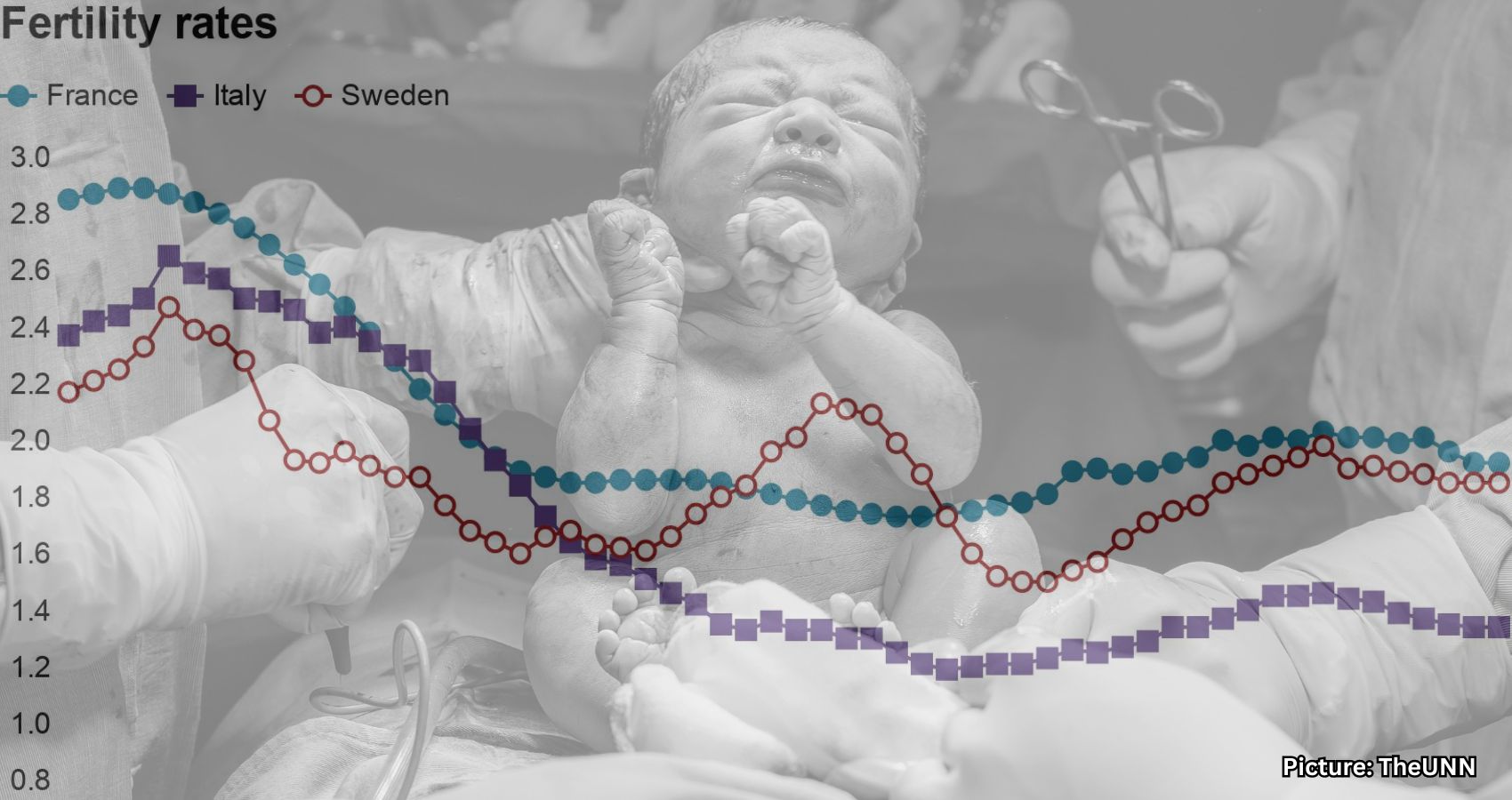The Italian town of Fregona, like many others, is grappling with a declining birthrate and migration, threatening its future and prompting local leaders to seek creative solutions to keep essential services like schools open.
Walking through the narrow main street of Fregona, located at the foot of Italy’s picturesque mountains, Mayor Giacomo de Luca points out businesses with closed shutters and faded signs. Among them are two supermarkets, a barbershop, and several restaurants. This once bustling town is experiencing a rapid decline in population, with many Italians opting for the opportunities offered by bigger cities or even abroad.
The decline in residents has now put the local primary school at risk. The mayor explains that the new Year One class cannot proceed due to having only four children enrolled, falling short of the minimum requirement of ten students needed for funding. “The drop in births and in the population has been very, very sharp,” De Luca says.
In recent years, Fregona’s population has decreased by nearly 20%, accentuating the issue. By June of this year, the town had welcomed only four new births, and many of the 2,700 remaining residents are elderly. The demographic shift is evident in the local market, where older residents shop and socialize.
For Mayor De Luca, the potential closure of the school reception class would be a turning point. He worries that if children leave to attend school elsewhere, they might not come back. In response, he’s been visiting neighboring areas, including a pizza factory, to persuade families to enroll their children in Fregona’s school. The town council even offers incentives such as free minibus transportation and extended school hours until 6 p.m.
“I’m worried. Little by little, if things keep going like this, the village will die,” De Luca expresses his concern.
Fregona’s situation reflects a broader demographic crisis across Italy. Over the past ten years, the nation’s population has decreased by almost 1.9 million, with birthrates on a consecutive 16-year decline. Italian women now average 1.18 children, the lowest recorded level, which is below the EU average of 1.38 and far beneath the 2.1 replacement rate.
Despite attempts by Giorgia Meloni’s right-wing government to promote family-friendly policies, the downward trend in birthrates continues unabated. Valentina Dottor, a resident of Fregona, highlights the caution many have when considering parenthood. Valentina receives a monthly allowance of about €200 for her 10-month-old daughter but feels it’s inadequate compared to the high cost of childcare.
Such financial constraints are a significant deterrent to having more children. “It’s difficult—because of work, schools, the money,” she adds. “There is some help, but it’s not enough to have babies. It won’t solve the problem.”
Recognizing these challenges, some companies in the Veneto region have implemented self-help schemes. One notable example is Irinox, a blast chiller manufacturer. In collaboration with seven other firms, they established a discounted and convenient on-site creche.
Melania Sandrin, a finance executive at Irinox, praises the proximity of the creche for providing peace of mind and preventing career disruptions. “Without the creche, I would have struggled to come back to work,” she admits.
CEO Katia da Ros argues for more comprehensive changes, suggesting services like free kindergartens would substantially impact addressing Italy’s population challenges. Meanwhile, increased immigration remains a contentious topic for Italy’s government, even as foreign workers become more integral to companies like Irinox.
Despite efforts like increased immigration, the closure of a primary school in nearby Treviso shows the stark reality. Pascoli Primary recently closed due to insufficient student enrollment, leaving families searching for alternatives. Eleanora Franceschi, whose 8-year-old daughter attended the school, emphasizes that the issue extends beyond the birthrate, pointing out inadequate school hours for working parents as a contributing factor.
Eleanora and others argue for better support services and practical aids, such as free summer camps, to align government goals for population growth with real-world support mechanisms for families.
“How can we have more babies in this situation?” Eleanora questions, encapsulating the frustrations of many Italian parents who contend that mere financial incentives aren’t enough.
As Italy faces an anticipated population drop of five million over the next 25 years, the pressure is mounting for comprehensive action to align economic policies with family support initiatives, a sentiment echoed by many in the affected communities.
According to BBC News.
Source: Original article


